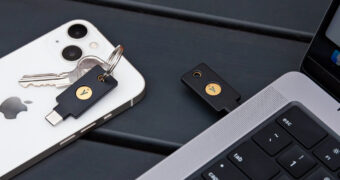Whether you’re just starting an ecommerce business or considering a rebrand, one of the most…
This SNES Classic Edition Teardown Gave Us All the Nostalgia
This SNES Classic Edition Teardown Gave Us All the Nostalgia
It took us awhile, but we finally managed to get our hands on the crazy-popular, highly-coveted SNES Classic Edition. Out of the box, the mini-console—with its familiar external construction—is designed for nostalgia. Add to that two throwback-style plug-in controllers, and you’re set to re-experience your (wasted) youth with any of the 21 included classic Super NES games.
We’re not gonna lie. We played with our SNES Classic for a while. Then we remembered how bad we are at Super Mario World and moved on to a game that we’re actually good at—the teardown game.
Confession time: Taking apart the Super NES Classic Edition made us just as nostalgic as playing the games. It has got a retro, accessible construction that reminds us of the original 90s-era units. No glue. No proprietary screws. No anti-tampering stickers in sight. Just four standard Phillips screws under four easy-to-remove rubber feet, and you’re in.
Once inside, the construction continues with the classic theme. We removed a heat sink/EMI shield, freed a few connectors for the controllers, and pulled loose a ribbon cable for the power buttons—exposing the mini-board brains of the Super NES Classic Edition. Since the games are pre-loaded instead of on cartridges, the board features some new silicon:
With the console in pieces, we moved on to a game controller. Like the console, the controllers are held together with Phillips screws. All the mechanical plastic and rubber buttons are removable—which is good news if you’re an over-enthusiastic button masher. Those buttons will be easy to replace (if you can find the parts). Nintendo did cut a few corners on the controller’s board, though: everything there is soldered down.
Overall—the Super NES Classic Edition was just as fun to take apart as it was to play. This mini-console earned an 8/10 on our repairability scale. We knocked points off for the lack of a repair manual, and because the HDMI and USB ports are soldered to the mainboard. Still, the only tools we needed were our handy Phillips #00 screwdriver, a spudger, opening picks, and some tweezers. Plus, it went back together in a jiffy.
And thank Link for that—because we fully intend to spend the weekend playing Zelda until we can’t see straight.
Read whole article at Source link >
[wpseo_map width=”100%” height=”300″ zoom=”-1″ map_style=”roadmap” scrollable=”0″ draggable=”1″ show_route=”0″ show_state=”1″ show_url=”0″] [wpseo_address hide_address=”1″ show_state=”1″ show_country=”1″ show_phone=”1″ show_phone_2=”0″ show_fax=”0″ show_email=”1″ show_url=”1″ show_logo=”0″ show_opening_hours=”1″]


